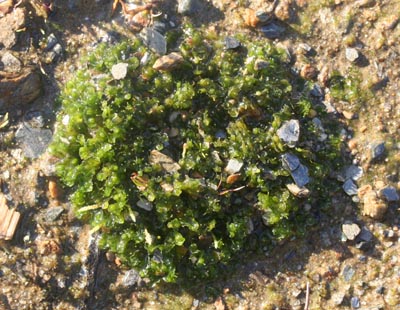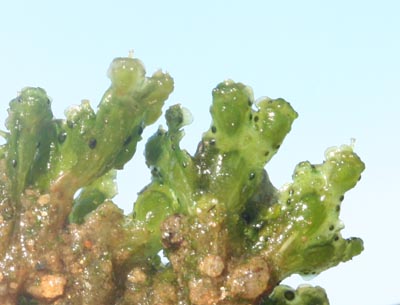Bright but cool.
An interesting little specimen worth a page to itself. This is Phaeoceros laevis, which I initially identified as a Liverwort (it is classified as such in my Moss and Liverwort book), but it is also classified as a Hornwort. Specimen shown about 20mm across.

Hornworts differ from Liverworts in a number of ways, mostly associated with reproductive structures (which also give rise the the name Hornwort). But Hornworts are also separated from Liverworts by their ability to store cells of the cyanobacterium Nostoc commune (the dark spots in the thallus below). This symbiotic partnership is beneficial to both organisms, which pass nutrients to each other. This symbiosis is different from the fungus-alga association in lichens, where the fungus captures the alga and keeps it prisoner: in the case of Hornworts, an opening in the thallus is created and the Nostoc occupies it of its own volition. An interesting parallel.

The reproductive sporophytes - which give rise to the name Hornwort - are currently about 3 mm tall.

Just to give some idea of scale, my fingernail (unusually presentable).
